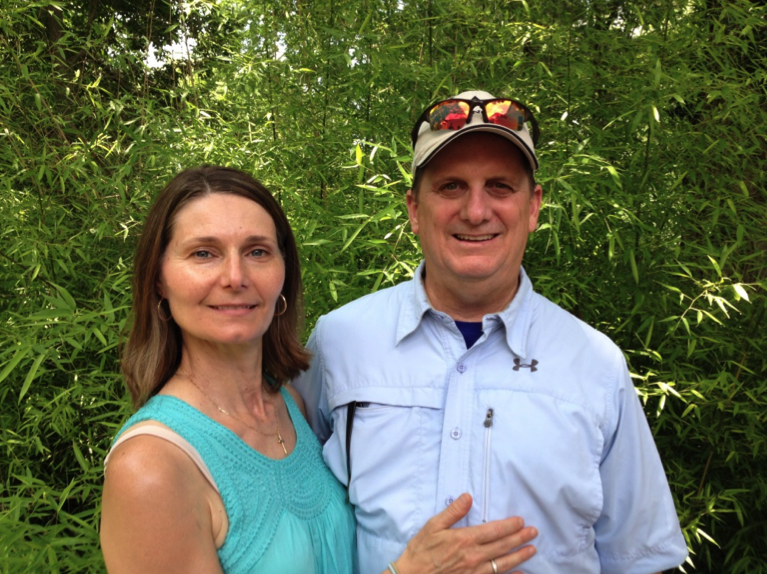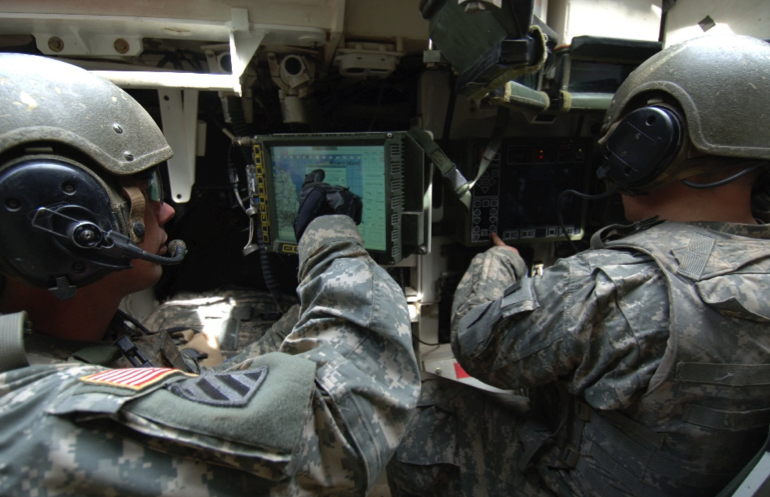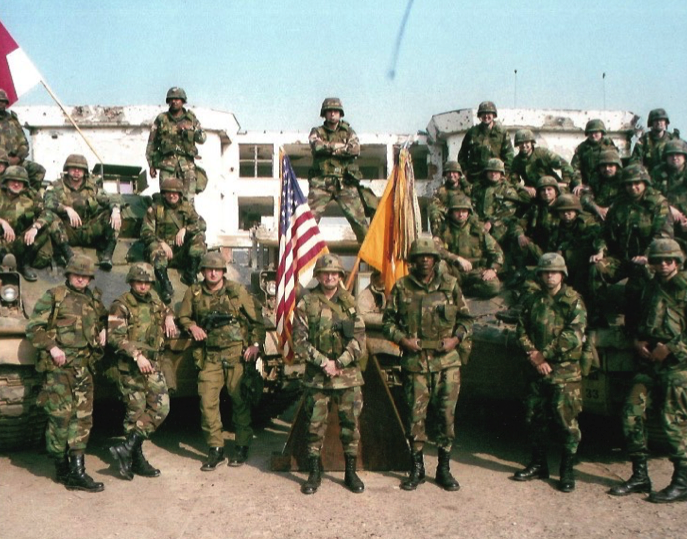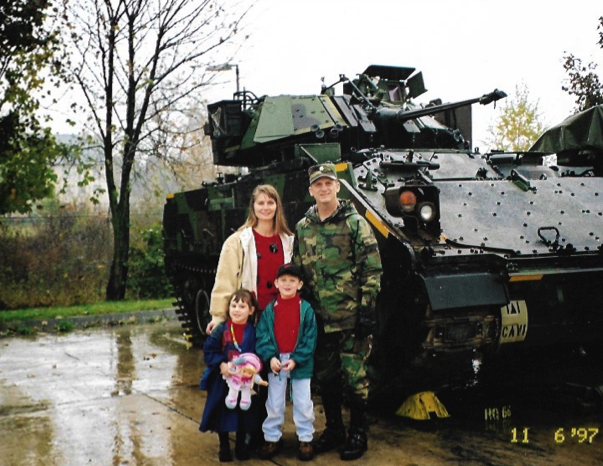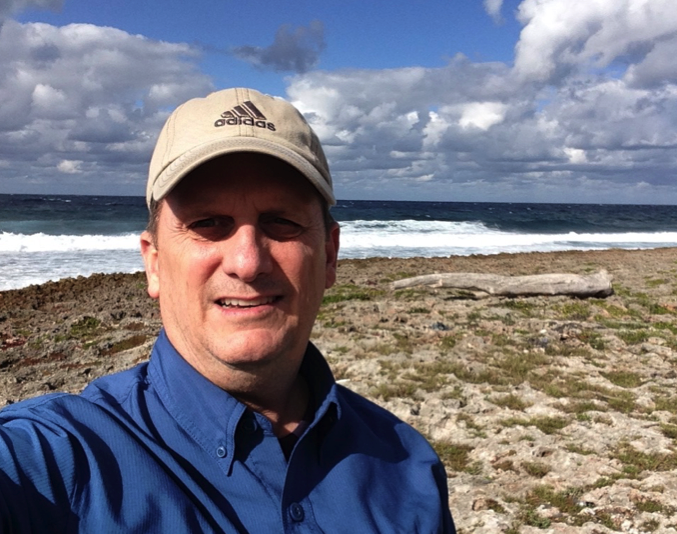Jeffersontown Resident Talks Military Career as a Lieutenant Colonel, Armor Battalion Trainer & More
Writer / Carrie Vittitoe
To understand what Jeffersontown resident Tim Cherry does now in his consulting work for the military, you have to know his background. The human capital he brings to his job at S2 Engineering took years of military service and training to hone and develop.
Tim’s military story begins with his father, Richard, who was a fighter pilot in the Air Force. As a result of his dad’s service, Tim and his family moved around, living in Massachusetts, New Mexico and Germany, where Tim graduated from Stuttgart American High School in 1975. When his father was stationed in Florida, Tim moved there and began attending college with the intention of becoming a physical education teacher and coach. During his sophomore year at Florida State, some of Tim’s friends recruited him to join the Army ROTC. He had been having second thoughts about teaching and coaching as a career by that time.
“I realized coaches didn’t make a lot of money,” he says. Tim’s life path set a different course in 1979 when he committed to the Army and at graduation was commissioned as a second lieutenant.
He began his military career at Fort Bliss, Texas for officer school and then went to Fort Polk, Louisiana for his first assignment. From there he went to Airborne School at Fort Benning, Georgia. Tim’s second assignment took him to Germany, where he really hit his stride and began receiving promotions.
“At that time, I knew I would stay in [for the long haul],” he says.
By 1985, Tim attended the Armor School at Fort Knox, Kentucky and in 1986 he returned to Fort Bliss, where he served as a cavalry troop commander. It was also where he met his wife, Heidi, who also served in the Army. As a troop commander of 100 men, Tim was fine-tuning his knowledge of tanks and Bradleys by training others.
Over the next decade, Tim would proceed to Command and General Staff College at Fort Leavenworth, Kansas, become a Major in cavalry and work as a trainer at Fort Irwin, California at the National Training Center. Eventually, he was selected for Battalion Command and served as a Lieutenant Colonel in Germany where he lead 900 troops. After the Bosnian war, he served as part of a NATO peacekeeping force there in 1996. The most challenging aspect of this assignment was knowing he and his troops were in close proximity to a giant minefield.
“You were scared you were going to run over a mine,” he says.
He says there were tens of thousands of mines along the border between Bosnia-Herzegovina and Serbia.
By the end of the 90s, Tim became a head Armor battalion trainer at the Combat and Maneuver Training Center and worked to ensure that battalions were prepared for combat. He then attended the Army War College in Carlisle, Pennsylvania for a year. At the dawn of the new century, Tim was a Colonel in charge of all deployments at I Corps in Fort Lewis, Washington. This position gave him the opportunity to travel to Thailand, Japan and Hawaii for military exercises.
As Tim began the final years of his military career, he served in a 4 Star Level Command at the United States Army Training and Doctrine Command (TRADOC), where he managed the Force XXI Battle Command Brigade and Below (FBCB2) program, a communication platform to monitor friendly and enemy forces.
His extensive knowledge of tanks and Bradleys gave Tim a clear understanding of what worked well and not-so-well from a tactical standpoint. He says one of the biggest changes that occurred during his career was the “need to digitize the battlefield.”
Prior to the Joint Battle Command Platform (JBC-P), commanders in tanks could communicate with their soldiers via voice radio and see thermal “hot spots” on a gunners’ display screen. Unfortunately, “you just know there is something out there. You don’t know if it’s enemy or friend,” Tim says.
He says commanders spent almost 80 percent of their time simply communicating locations of the vehicles and soldiers under their command, which left less time for strategizing. He says commanders used paper maps and marker pens to keep track of where their vehicles were. Today, JBC-P is a friendly-force tracking system that allows commanders to know exactly where their units are on a screen and has minimized the confusion and noise inside tanks and Bradleys.
“Commanders in the past were focusing on ‘Where are my troops?’ They are focusing on the enemy now,” he says.
In 2002-2003, Tim was in Kuwait helping field and train the units that were getting the early Blue Force Tracking (BFT) systems installed in their tanks, Bradleys, and other armored vehicles before heading for Baghdad, Iraq.
“Every day of the march to Baghdad, we could see where they were and how they moved,” he says.
Tim’s tactical knowledge and experience made him a perfect combat developer for the system. Unlike a materiel developer, who writes the software, “I represented the war fighter,” he says.
Tim now writes the requirements of what the system needs to do from a tactical standpoint and explains it in a way that a materiel developer can understand. One of the benefits of JBC-P is that it maintains a record of chat conversations, which Tim says “has revolutionized tactical communications in the Army.”
In the years since, the Army has worked to put JBC-P into nearly every vehicle, and Tim says it is a constant modernization process.
“Our program is one of the success stories of the Army,” he says and one that is supported by the Chief of Staff of the Army and Congress. To put the JBC-P in 100,000 vehicles takes many years and costs hundreds of millions of dollars. In 2023, Tim says the Army will begin modernizing again to ensure that soldiers have updated technology and stay ahead of adversaries.
Although Tim retired from the Army in 2005, because of his vast store of tactical knowledge he has worked as a Systems Engineering and Technical Assistance (SETA) contractor since then.
“I know the operational side because I was in armor and cavalry units,” he says. He generally goes into Fort Knox a couple days a week but can do much of his work from home. Should he and Heidi ever decide to move from Louisville, Tim has the flexibility of working from anywhere.
When he isn’t working, Tim is involved at Southeast Christian Church. He has gone on mission trips to Cuba four of the past five years, where he has worshiped at house churches with residents and done evangelism with local church ministers to share the Gospel message.


